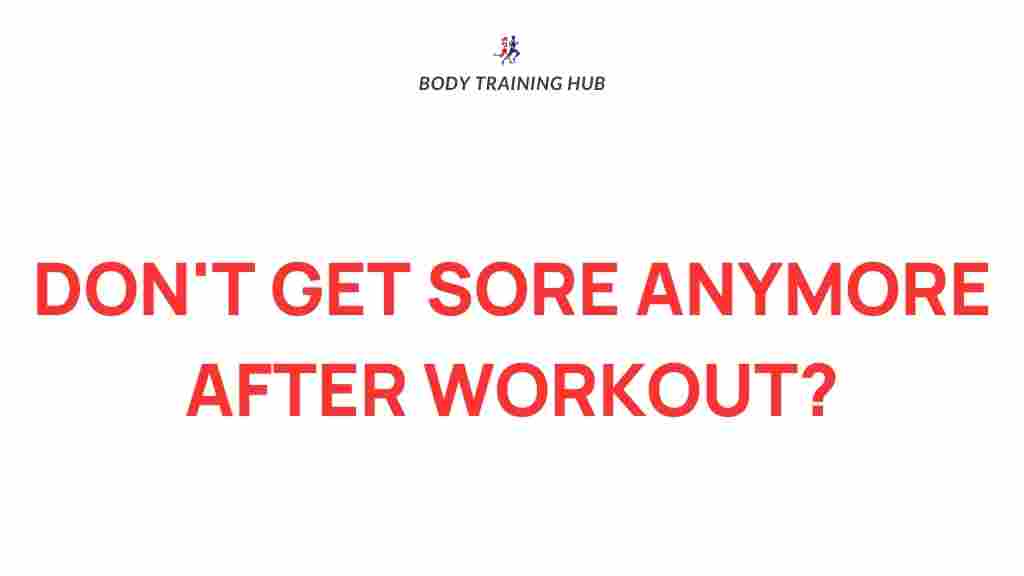Unlock the Secrets to Preventing Post-Workout Soreness
Engaging in regular physical activity is essential for a healthy lifestyle, but many fitness enthusiasts dread the aftermath of intense workouts: workout soreness. This discomfort, often referred to as delayed onset muscle soreness (DOMS), can impact your motivation and performance. However, with the right fitness recovery strategies, you can minimize this soreness and enhance your muscle recovery. In this article, we will explore effective exercise tips and fitness hacks to help you unlock the secrets to preventing workout soreness.
Understanding Workout Soreness
Before diving into prevention techniques, let’s understand what workout soreness is and why it occurs. After a strenuous workout, your muscles undergo microscopic damage, leading to inflammation and pain. This is a normal response to physical activity, especially if you are trying new exercises or increasing intensity. While some soreness is expected, excessive discomfort can hinder your fitness journey.
What Causes Workout Soreness?
Workout soreness primarily stems from:
- Micro-tears in Muscle Fibers: High-intensity workouts, especially resistance training, cause tiny tears in muscle fibers.
- Inflammation: The body responds to these micro-tears with inflammation, which can lead to discomfort.
- Lactic Acid Build-Up: During intense exercise, lactic acid may accumulate, contributing to a burning sensation during workouts.
Effective Strategies for Fitness Recovery
Now that we understand the causes, let’s explore several effective strategies to enhance muscle recovery and prevent workout soreness.
1. Warm-Up and Cool Down
A proper warm-up and cool-down routine are crucial for preparing your muscles for exercise and aiding recovery afterward.
- Warm-Up: Engage in dynamic stretches and light cardio for at least 5-10 minutes before your workout to increase blood flow and flexibility.
- Cool Down: After your workout, spend 5-10 minutes doing static stretches to help relax your muscles and improve recovery.
2. Stay Hydrated
Hydration is vital for optimal muscle function and recovery. Dehydration can exacerbate muscle soreness and hinder recovery.
- Drink Water: Aim to drink water before, during, and after your workouts.
- Electrolyte Balance: Consider beverages with electrolytes if you are engaging in prolonged or intense exercise.
3. Nutrition for Muscle Recovery
Proper nutrition plays a significant role in how well your body recovers from workouts. Focus on incorporating the following into your diet:
- Protein: Essential for muscle repair. Include lean meats, dairy, eggs, and plant-based proteins.
- Carbohydrates: Replenish glycogen stores with whole grains, fruits, and vegetables.
- Healthy Fats: Support overall health with sources like avocados, nuts, and olive oil.
4. Utilize Active Recovery
Instead of complete rest, consider engaging in active recovery techniques. These can include:
- Light Exercise: Activities like walking, cycling, or swimming can promote blood flow without putting excessive strain on your muscles.
- Yoga and Stretching: Incorporate yoga or gentle stretching routines to enhance flexibility and relaxation.
5. Get Enough Sleep
Sleep is when most muscle recovery occurs. Prioritize quality sleep to enhance your fitness recovery:
- Sleep Duration: Aim for 7-9 hours of quality sleep per night.
- Sleep Environment: Create a conducive sleep environment—dark, cool, and quiet.
Advanced Fitness Hacks for Muscle Recovery
If you are looking for additional techniques to optimize your recovery and prevent workout soreness, consider the following fitness hacks:
1. Foam Rolling
Foam rolling can help alleviate muscle tightness and improve circulation. Use a foam roller on sore areas post-workout to aid recovery.
2. Contrast Baths
Alternating between hot and cold water baths can stimulate blood flow and reduce soreness. Try soaking in hot water for 3 minutes, followed by cold water for 1 minute, and repeat several times.
3. Massage Therapy
Regular massages can help reduce muscle tension and improve recovery times. Consider scheduling a professional massage or using massage tools at home.
4. Supplements
Some supplements may aid in muscle recovery. Always consult with a healthcare provider before starting any new supplements. Popular options include:
- Branched-Chain Amino Acids (BCAAs): May reduce muscle soreness after workouts.
- Omega-3 Fatty Acids: Known for their anti-inflammatory properties.
Troubleshooting Workout Soreness
Despite your best efforts, you may still experience workout soreness. Here are some troubleshooting tips to consider:
1. Listen to Your Body
Pay attention to your body’s signals. If you notice excessive soreness or pain, it may be an indication to modify your workout intensity or routine.
2. Gradual Progression
Increase the intensity and volume of your workouts gradually. Sudden changes can lead to increased soreness and potential injuries.
3. Assess Your Technique
Improper form can lead to unnecessary muscle strain. Consider working with a trainer to ensure you are using the correct technique for exercises.
4. Cross-Training
Incorporate a variety of exercises to prevent overuse injuries and distribute stress across different muscle groups.
Conclusion
Preventing workout soreness is not just about enduring the pain; it’s about understanding your body and implementing effective fitness recovery strategies. By following the exercise tips and fitness hacks outlined in this article, you can minimize discomfort and enhance your muscle recovery. Remember to listen to your body, stay hydrated, prioritize nutrition, and consider advanced recovery techniques. Embrace these strategies, and you’ll soon find that workout soreness no longer holds you back from achieving your fitness goals.
For more information on fitness recovery strategies, check out this informative article. Also, explore some of the latest fitness trends at this resource.
This article is in the category Strength & Recovery and created by BodyTraining Team
